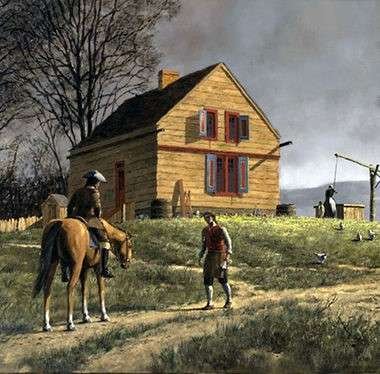
 The term “Low Countries” is a political and historic concept rather than a geographic one. Prior to modern nation-building, it referred to an area of northern Europe roughly stretching from Pas-de-Calais in France to the area of Schleswig-Holstein in Germany, including French-speaking Wallonia and Dutch-speaking Flanders.
The term “Low Countries” is a political and historic concept rather than a geographic one. Prior to modern nation-building, it referred to an area of northern Europe roughly stretching from Pas-de-Calais in France to the area of Schleswig-Holstein in Germany, including French-speaking Wallonia and Dutch-speaking Flanders.
Born in Ghent in 1500 Charles V, Holy Roman Emperor and King of Spain, ruled over the vast Habsburg Empire that included the Low Countries. Flanders was crucial to its economy.
The port of Antwerp earned the Spanish Treasury an estimated seven times more in revenue than the colonized Americas altogether. Hence the regime’s restrained attitude towards the emerging Reformation. The province eluded the incessant scrutiny of the Spanish Inquisition and flourished commercially and culturally.
Under the dictatorial reign of his devoutly Catholic son Philip II, the Low Countries disintegrated, one part suppressed, the other struggling for independence. Mass migration of skilled Protestants from Antwerp, Ghent and other cities to the north caused a shift in the balance of power.

 Building on the experience of Flemish mercantile centers, the Dutch Republic would create a commercial, colonial and artistic realm that was unrivaled in Europe.
Building on the experience of Flemish mercantile centers, the Dutch Republic would create a commercial, colonial and artistic realm that was unrivaled in Europe.
During the Age of Exploration, Dutch and English merchants competed to discover a northern route to Asia’s profitable markets. When Henry Hudson was dismissed by the London Muscovy Company for failing to accomplish that challenge, he was immediately re-employed by the Amsterdam Chamber of the East India Company (established in 1602).
Hudson’s 1609 trip up the river beyond the island of Manhattan heralded a short but significant period in which the West India Company (WIC) founded and ruled New Netherland with New Amsterdam at its center.
Historians tend to understate the contribution made by Flemish and Walloon refugees to the colony’s development and management.
Protestant pioneers from the Spanish Netherlands carried with them memories of persecution which fortified their motivation to succeed in a challenging environment. A number of them would occupy leading roles in the colonial administration.
Had New Netherland not been founded by the Amsterdam-based WIC, the settlement may well have been named New Flanders.
Colonial Architecture
In October 1614, a group of merchants formed The New Netherland Company and received a three-year monopoly from the States General – the de facto federal government of the Dutch Republic – to exploit the Hudson region.
In 1615 the Company erected Fort Nassau on Castle Island and began the trade in fur with the native people who lived there. At the end of its term the contract was not renewed, but Dutch traders remained active in the area, locating their ships below a sand bar in the Old Anchorage.
In 1621, after years of private involvement, the States-General created the West India Company (WIC) and the state sponsored monopoly began settling New Netherland. At the same time, Amsterdam was dealing with a mass influx of Flemish and Walloon migrants fleeing Spanish persecution in the southern Netherlands.
The WIC recruited a number of refugee families who crossed the Atlantic on board of the Nieu Netherlandt (New Netherland) skippered by Cornelius Jacobsen Mey.
The group landed in May 1623 on an island that the local Lenape people referred to as “Paggank” (Nut Island). As the WIC aimed at protecting the entrance to the river, the Company sponsored settlers to cross to Manhattan and stake out a post on the island’s southern tip.
New Netherland’s third Director Peter Minuit (of Walloon descent) purchased the island from Native Americans in 1626. Four years later, Fort Amsterdam was built and New Amsterdam would become the port through which all trade had to pass. America’s modern history starts in Manhattan.
Dutch control of the colony was relatively brief, but its influence has been pervasive. New Amsterdam was built on an irregular pattern of yellow brick roads lined with houses that showed a variety of stepped gables and stylish stoops. It became a feature of New York’s cityscape. Rural colonial architecture showed a similar connection with the past.
Dutch and Flemish settlement on the island of Manhattan rapidly moved northward along the river to present-day Albany, where a thriving community developed through farming and trade with Indigenous people. Colonists constructed houses and barns in a style of building that relied on traditional Netherlandish practices.
Peter the Fleming
Established as a mere fur-trading post, the colony took time to prosper. In the early days of settlement, New Netherland was conceived of in paradoxical terms: at once a land of investment possibilities and an unpleasant swamp where few residents of the affluent Dutch Republic were willing to live and work. Flemish and Walloon refugees were more inclined to join the venture.

 For nearly two hundred years, the Winnes were tenants of the Van Rensselaer family, the Patroons (manorial lords) of the Albany region.
For nearly two hundred years, the Winnes were tenants of the Van Rensselaer family, the Patroons (manorial lords) of the Albany region.
Their million-acre estate, known as Rensselaerswijck, was established in 1629 by a WIC charter that empowered the first patroon, Kiliaen van Rensselaer (one of the founder-directors of the Company), to purchase all the land beginning above and below Fort Orange (Fort Oranje) on both sides of the Hudson River.
Pieter Winne was the founder and patriarch of the family. Born in Ghent in 1609, he had most likely moved to the Dutch Republic and was employed by the WIC.
Having spent some time in the Caribbean colony of Curaçao with his first wife Aechie Jans van Schaick who may have died in child birth there, he arrived in New Netherland in 1652 with his second wife Tannetje Adams (born in Leeuwarden, Friesland) and their children.
Once settled, he became known as “Pieter de Vlamingh” (Peter the Fleming).
Through farming, fur trading and the operation of saw- and gristmills, Pieter Winne built his estate. His farmhouse and mill were located in the southwestern part of the manor in a settlement called Bethlehem. A local creek near his home was known as “Vlamings Kill” in recognition of his Flemish origins.
Kill was derived from the Middle Dutch word “kille,” meaning riverbed or water channel. Over time, the name was corrupted to Vloman’s Kill.
The Winne dynasty continued to reside along the creek through the end of the nineteenth century. In 1735, descendants of Pieter’s neighbors and friends established the town of Ghent in Columbia County.
Winne’s public service included a stint on the “rattle watch” at Beverwyck (the community outside the walls of Fort Orange) in 1659 looking out for fires or suspicious activities from ten in the evening until four in the morning.
For five two-year terms he served as a magistrate for Bethlehem, appointed by various New York colonial governors. In the 1670s his immediate neighbor was Martin van Buren, forefather of the American President of the same name. After Pieter’s death in the early 1690s, his widow married Van Buren in 1693.
Daniel Winne
Daniel Winne descended from Pieter the Fleming’s youngest son, Daniel Pietersz Winne who was still a minor when his father died and his interest in the estate was overseen by his “tutor,” Kiliaen van Rensselaer. This early relationship with the patroon served him well throughout a lifetime of loyal service.
By the terms of Pieter the Fleming’s will, Daniel Pietersz inherited the mill on Vloman Kill and the nearby farmstead at Bethlehem. Later, in 1711, Van Rensselaer granted him additional land along the stream.

 It was here that his son Peter Daniel built a house in about 1725, five years after his marriage to Rachel van Alen. He later settled his eldest son Daniel Peter on farmland along the Vloman Kill about a half mile more to the west.
It was here that his son Peter Daniel built a house in about 1725, five years after his marriage to Rachel van Alen. He later settled his eldest son Daniel Peter on farmland along the Vloman Kill about a half mile more to the west.
The latter built his house in 1751 after his marriage to Jannetje de Forest. Their descendants lived at the farmstead until 1954 when it was sold out of the family. Although built a generation apart, the houses of father and son were almost identical in layout and construction.
Ever since Dutch and Flemish immigrants began settling in the Hudson River Valley, they built houses and barns that relied on traditional Netherlandish practices and prototypes. Early settlers set out to “recreate” the culture they had left behind.
The desire to create a home from home was also manifest in New Amsterdam’s planning. In 1646, the colonial government decided to dig a network of canals wide enough for small boats to navigate through the city’s commercial centre.
The largest canal was the Heere Gracht (Gentleman’s Canal), running from Broad Street to Beaver Street. Its continuation was called Prinzen Gracht.
Both were named after and a reminder of Amsterdam’s most elegant canals. Soon after the hand-over of the city in 1664, they deteriorated into open sewers and were drained by the English authorities three years later.
Despite the diversity of a multicultural population, the persistence of Netherlandish styles and outlines remained strong into the eighteenth century.
Even the Van Rensselaers administered their estate from dwellings of the same basic design as those occupied by their tenants until Stephen Van Rensselaer II, the fifth patroon, built a manor house in the English Georgian style in 1769.
Dutch Doors
The Daniel Peter Winne (1720-1800) house served as model for a Dutch Room at the American Wing of New York’s Metropolitan Museum of Art. The original property had two rooms on the ground floor, with a half-story above and a cellar below.
The Museum installed the larger of the two first-floor chambers (groote kamer) and presented it as a gallery rather than a period room, featuring a fireplace, furniture, metalwork, silver ware, ceramics and glass that were peculiar to New Netherland households.
Dutch and Flemish colonial homes of New York and New Jersey were very different from those built in New England or Virginia and derived directly from late medieval building traditions in the Low Countries.
Dominant architectural features of the house were a steep gable roof and leaded-glass casement windows.
A staple of design in the Low Countries since the seventeenth century, the “Dutch door” (stable or half door in British English) holds a unique place in American architectural history.
The door can be seen in many paintings by Dutch masters who, like Pieter de Hooch, were inspired by the possibility of evoking an indoor – outdoor connection.
A “doorkijkje” (literally: looking through a door) was a pictorial device of opening the vista from inner to outer world. It was of symbolic significance as it linked domestic privacy with the public domain as interdependent entities.
Settlers in New Netherland introduced split Dutch exterior doors to American building. They were favored in rural New Netherland and common in the Hudson Valley.
With most people living on farms, this type of door allowed fresh air and light to circulate, while keeping roaming animals outside and children safely indoors. In smoke filled kitchens where cooking was done in an open fireplace, ventilation was essential.
Dutch doors enabled owners to converse with neighbors and visitors, or receive deliveries without granting them full access to their homes. They were tailor-made for gossip. The door was both boundary with and opening to the outside world. Even in urban settings Dutch doors gained popularity.
Between 1624 and 1664, the West India Company established a viable settlement in New Netherland.
After the English take-over, colonial architecture remained virtually unchanged as building traditions of the Low Countries prevailed. Local craftsmen were brought up with these practices and did not alter familiar construction patterns.
It would take several decades for gradual changes of taste and style to take hold. By the mid-eighteenth century, colonists opted for the more formal Georgian style, thereby changing the face of Manhattan’s rural and urban environment.
Read more about New Netherland.
Illustrations, from above: An artist’s conjectural rendering of Daniel Pieter Winne’s house (New York Metropolitan Museum); Pieter de Hooch’s “At the Linen Closet,” 1663 (Rijksmuseum, Amsterdam); the Winne Room with Dutch doors (New York Metropolitan Museum); and Samuel van Hoogstraten, Woman at a Dutch Door, 1645 (Art Institute of Chicago).








Recent Comments